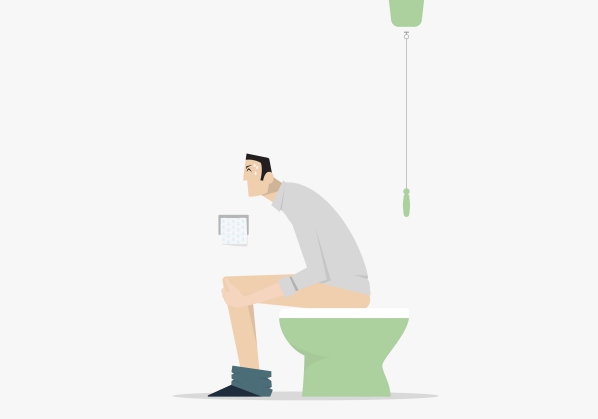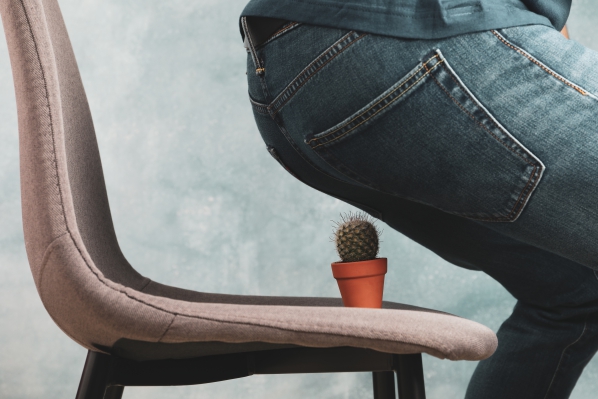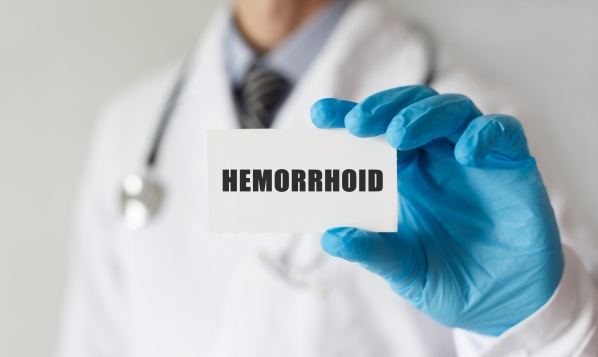What are haemorrhoids?
Haemorrhoids are swollen veins that are located in your lower rectum. It is one of the most common disorder affecting the rectum and anus. Haemorrhoidal venous cushions are normal structures found in your rectum and anus responsible for maintenance of anal continence. When these structures get engorged and prolapse, this is when you are said to have haemorrhoids. The symptoms present with this condition may range from mild itchiness to severe rectal bleeding. Despite being a common disorder, many people are too embarrassed to seek medical help.
It is estimated that about 4.4% of the world population have haemorrhoids. In the United States, statistics show that only about one third of the approximately 10 million people with haemorrhoids actually seek medical attention. It is more common among white people. It affects men and women equally even if pregnancy has shown to increase the risk of having the disease. It is most common among people aged between 45-65 years.
Even if haemorrhoids does not usually cause severe health issues, it can be bothersome and uncomfortable. However, several treatment options are available to improve your quality of life.
Causes and risk factors for Haemorrhoids
As explained above, haemorrhoids are naturally occurring structures in your lower gastrointestinal tract. It starts to cause symptoms when it becomes swollen, prolapsed and inflamed. Haemorrhoids can be internal or external. Internal haemorrhoids are those which do not protrude out of the anus. External haemorrhoids on the other hand are those which protrude out of the body.

Some of the possible causes of haemorrhoids include the following:
- Low fibre diets: Eating a low amount of fibre results in small-calibre stools leading to straining during defecation. This causes an increased pressure in the haemorrhoidal cushions, impairing the blood flow out of the cushions. This inevitably results in engorgement and swelling of your haemorrhoids.
- Pregnancy: As your uterus grows bigger with the growing baby, it compresses on other structures found in the abdomen including blood vessels. This causes an increase in pressure in your haemorrhoidal cushions also leading to engorgement.
- Prolonged sitting: Prolonged sitting, especially on a toilet, can cause an impaired blood return from the haemorrhoidal veins resulting in enlarged haemorrhoids.
- Ageing: You are more likely to have haemorrhoids when you get old due to the weakening of your support muscles which enables prolapse or your haemorrhoid.
Other risk factors which can put you more at risk of having haemorrhoids include the following:
- Family history of haemorrhoids
- Chronic diarrhoea
- Cancer in your large intestine
- Liver disease
- Being obese
- Previous rectal surgery
- Anal sexual intercourse
- Previous episiotomy during childbirth
Signs and symptoms of haemorrhoids
Haemorrhoids can present with a variety of signs and symptoms. These include:
- Rectal bleeding: This is usually seen as bright red blood on your stools in the toilet or as streaks on the toilet paper after defecation. It is usually a small amount, however, it can cause the toilet water to appear bright red which can be frightening to some people. In rare cases, the bleeding may be heavy.
- Itchiness: Many people complain of itchy sensation around the anus. Irritation of the surrounding skin can also be present.
- Pain: In some people, haemorrhoids can be very painful. It can present as a painful bulge. Pain mostly arises due to the formation of a blood clot, known as a thrombus, in the haemorrhoid.

It is important to not immediately associate the above symptoms with haemorrhoid as there are other medical conditions that can present with the same symptoms. These disease include anal fissure, abscess, fistula formation, anal warts or skin infections.

Making a diagnosis
After having taken a detailed clinical history from you to rule out certain medical conditions, your doctor will then proceed to examining you. He/she will begin by having a look at your anus and inspecting for any fissure or obvious bulging masses or bleeding.
Furthermore, your doctor may need to carry out a digital rectal examination. In this procedure, your doctor will insert a finger through your anus into your rectum to palpate for any abnormalities and masses located in your rectum. This will help your doctor to grade the severity of your condition.
Depending on your current situation, your doctor may need to order some more tests including:
 Blood tests: A complete blood count may be done to look for the presence of coexisting infections. It is also useful in evaluating if you have anemia due to chronic blood loss from your anus.
Blood tests: A complete blood count may be done to look for the presence of coexisting infections. It is also useful in evaluating if you have anemia due to chronic blood loss from your anus.- Anoscopy or flexible sigmoidoscopy: In these procedures, a tube-like instrument with a camera on its end is inserted into your rectum to look for the presence of internal haemorrhoids.
- Colonoscopy: Similarly, this procedure is carried out by inserting a camera into your rectum to look for any abnormalities. In contrast, however, colonoscopy is used to visualise the whole large intestine if an anal or rectal cause of bleeding is not identified.
Treatment of Haemorrhoids
Haemorrhoids require treatment only if they cause bothersome symptoms. There are several measures that can be taken to relieve symptoms from haemorrhoid. One of the most important measure is to avoid constipation and this can worsen the condition. Other measures include:
- Taking fibre supplements: Increasing the amount of fibre in your diet can help in softening your stools making it easier to defecate. Foods that are rich in fibres include fruits and vegetables. It is recommended to consume about 20-35 grams of fibre per day. Supplements are also available including psyllium, methylcellulose, polycarbophil and wheat dextrin.
- Laxatives: If your constipation is still not relieved after increasing your fibre intake, you may be prescribed a laxative. These help in relieving constipation by loosening stools.
- Warm sitz baths: During a sitz bath, you will have to soak your rectal area in warm water for a duration of about 10-15 minutes about 2-3 times a day. No soap or bubble baths should be added to the water. It works by improving blood circulation and relaxing anal sphincters.
- Topical treatments: Creams and suppositories used to relieve pain and inflammation from haemorrhoids are also available.

If your symptoms are too bothersome, you may require surgery. The different types of surgeries depend on whether the haemorrhoid is found internally or externally. Some of the existing procedures include:
- Rubber band ligation: This procedure is the most common one performed for internal haemorrhoids. In 70-80% of people, this treatment is successful. In this procedure, rubber bands or rings are placed at the base of the haemorrhoid. The band is passed through a tube-like instrument called an anoscope. The constriction of the band causes compromised blood flow to the haemorrhoid which eventually shrinks and degenerates over the coming days. This procedure cannot be used for prolapsed or external haemorrhoids and rarely causes complications.
- Laser, infrared or bipolar coagulation: In these procedures, laser, infrared light or heat, respectively, are used to destroy the haemorrhoids.
- Sclerotherapy: In this procedure, a special solution is injected in your haemorrhoid breaking down the tissue present causing scarring. However, this procedure is associated with a higher risk of having pain after the procedure. Furthermore, following sclerotherapy, the haemorrhoid may recur in 30% of people.
- Haemorrhoidectomy: This is the surgical procedure in which your haemorrhoid is surgically removed. This is done for both internal and external haemorrhoids causing bothersome symptoms. In this procedure, excess haemorrhoidal tissues are removed. After surgery, you will be advised the following; avoid constipation, lose weight, avoid prolonged sitting on the toilet and at work.

Complications
Some complications associated with haemorrhoids include:
- Infection
- Abscess
- Inability to hold in faeces
- Thrombus formation in the haemorrhoid which is the formation of a blood clot
- Anemia due to blood loss
Other complications may be due to haemorrhoidectomy, including:
- Bleeding
- Infection
- Delayed healing of surgical wound
- Formation of fistula which is a connection between your anus and other surrounding organs
- Inability to completely empty the bladder
Prognosis
Haemorrhoid is a condition that usually resolve on its own or with the use of conservative therapy. However, complications can arise due to the condition itself or following surgery. The condition may recur in about 10-50% of people who do not undergo surgery compared to 5% in those who undergo haemorrhoidectomy.

Source:
Perry, K., 2020. Hemorrhoids Clinical Presentation: History, Physical Examination, Grading of Internal Hemorrhoids.
Bleday, R., and Breen, E., 2019. Home and office treatment of symptomatic hemorrhoids.


